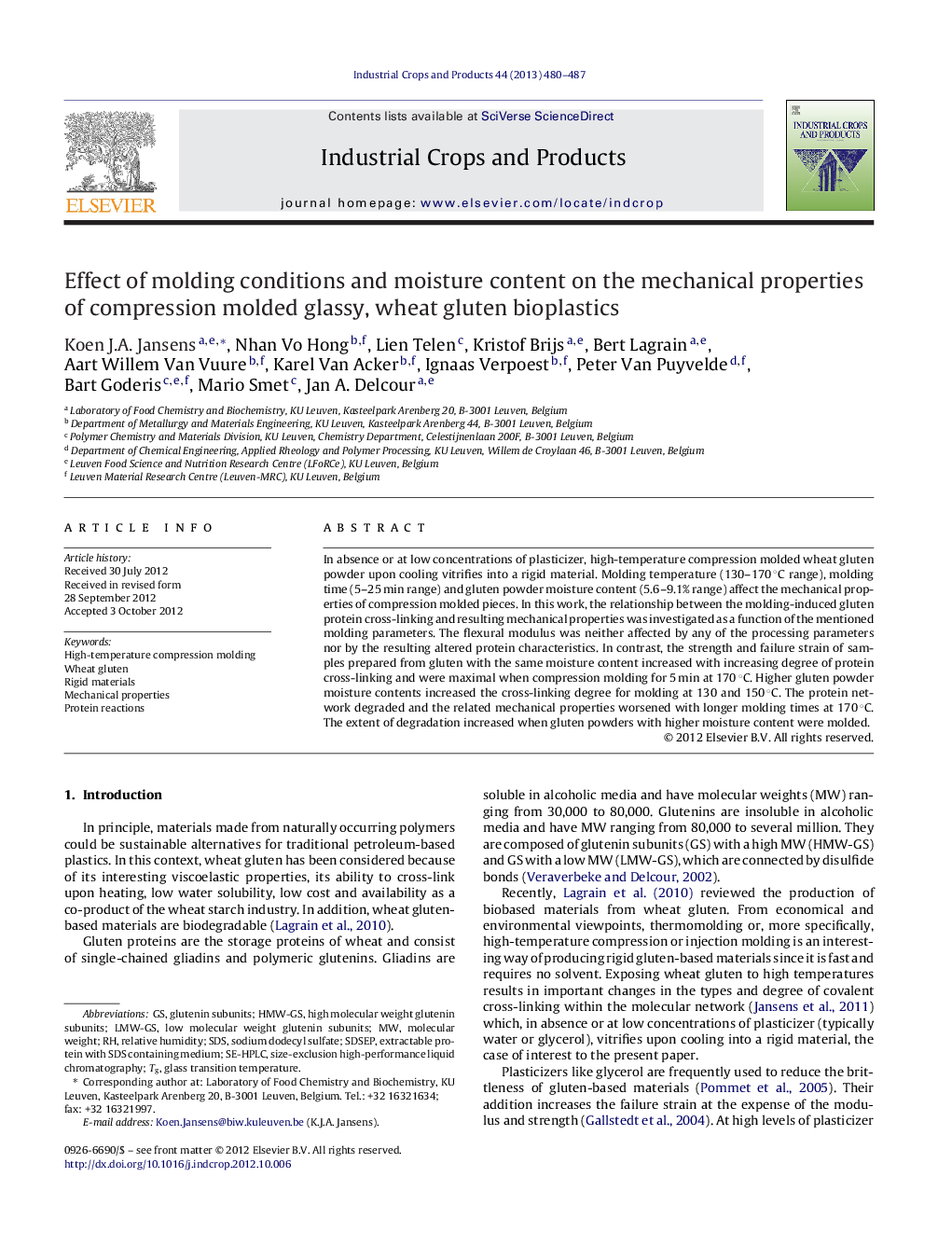| Article ID | Journal | Published Year | Pages | File Type |
|---|---|---|---|---|
| 4513671 | Industrial Crops and Products | 2013 | 8 Pages |
In absence or at low concentrations of plasticizer, high-temperature compression molded wheat gluten powder upon cooling vitrifies into a rigid material. Molding temperature (130–170 °C range), molding time (5–25 min range) and gluten powder moisture content (5.6–9.1% range) affect the mechanical properties of compression molded pieces. In this work, the relationship between the molding-induced gluten protein cross-linking and resulting mechanical properties was investigated as a function of the mentioned molding parameters. The flexural modulus was neither affected by any of the processing parameters nor by the resulting altered protein characteristics. In contrast, the strength and failure strain of samples prepared from gluten with the same moisture content increased with increasing degree of protein cross-linking and were maximal when compression molding for 5 min at 170 °C. Higher gluten powder moisture contents increased the cross-linking degree for molding at 130 and 150 °C. The protein network degraded and the related mechanical properties worsened with longer molding times at 170 °C. The extent of degradation increased when gluten powders with higher moisture content were molded.
► Compression molding gluten with low moisture resulted in rigid, glassy materials. ► Processing affected protein cross-linking, material properties and morphology. ► The modulus of rigid gluten materials did not depend on cross-linking degree. ► The strength of rigid gluten materials increased with the degree of cross-linking. ► The strength decreased with increasing moisture content after molding.
